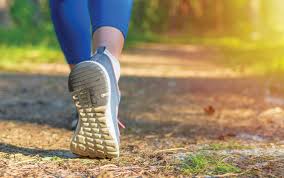Blooming Tranquility: Embracing the Beauty of Your Garden

The Beauty and Serenity of Gardens
Gardens have long been cherished for their beauty, tranquility, and ability to connect us with nature. Whether it’s a small backyard garden or a sprawling botanical garden, these green spaces have a way of captivating our senses and soothing our souls.
One of the most enchanting aspects of gardens is the array of colors that greet us at every turn. From vibrant flowers in full bloom to lush green foliage swaying in the breeze, gardens are a feast for the eyes. The careful arrangement of plants and flowers creates a symphony of colors that can uplift our spirits and inspire creativity.
But gardens offer more than just visual delight – they also engage our sense of smell. The sweet fragrance of blooming flowers, the earthy scent of freshly turned soil, and the subtle perfume of herbs all combine to create a sensory experience like no other. A leisurely stroll through a garden can awaken our senses and transport us to a place of peace and serenity.
In addition to their aesthetic appeal, gardens provide numerous benefits for both our physical and mental well-being. Studies have shown that spending time in nature can reduce stress, lower blood pressure, and improve overall mood. Gardening itself is also known to be a therapeutic activity that promotes mindfulness and relaxation.
Furthermore, gardens play an important role in supporting biodiversity and conservation efforts. By providing habitat for birds, insects, and other wildlife, gardens contribute to the health of local ecosystems and help maintain ecological balance.
Whether you’re an avid gardener or simply enjoy visiting botanical gardens, there’s no denying the magic that gardens hold. So take some time to immerse yourself in the beauty and serenity of these green spaces – you may just find yourself feeling rejuvenated and inspired by the experience.
9 Essential Tips for Cultivating a Thriving Garden
- Choose the right plants for your climate and soil type.
- Water your garden regularly, especially during dry periods.
- Mulch around plants to retain moisture and suppress weeds.
- Prune plants to promote healthy growth and flowering.
- Monitor for pests and diseases, and take appropriate action if needed.
- Fertilize your garden periodically to provide essential nutrients to plants.
- Rotate crops in vegetable gardens to prevent soil depletion and pest buildup.
- Create a compost pile to recycle organic waste into nutrient-rich soil amendment.
- Take time to relax and enjoy the beauty of your garden.
Choose the right plants for your climate and soil type.
Selecting the appropriate plants for your specific climate and soil type is crucial in creating a thriving garden. By choosing plants that are well-suited to the conditions in your area, you can ensure they receive the necessary nutrients and environmental factors to flourish. Researching and selecting plants that are adapted to your local climate and soil type will not only make maintenance easier but also increase the chances of a successful and vibrant garden. Remember, the right plant in the right place can make all the difference in creating a beautiful and sustainable garden space.
Water your garden regularly, especially during dry periods.
It is crucial to water your garden regularly, especially during dry periods, to ensure the health and vitality of your plants. Adequate watering helps prevent wilting, dehydration, and stress in plants, allowing them to thrive and flourish. During dry spells, plants may not receive enough moisture from natural sources, making it essential for gardeners to supplement with regular watering. By maintaining a consistent watering schedule and ensuring that plants receive sufficient hydration, you can help your garden thrive and bloom beautifully throughout the season.
Mulch around plants to retain moisture and suppress weeds.
Mulching around plants is a simple yet effective tip for maintaining a healthy garden. By adding a layer of mulch, such as wood chips or straw, around your plants, you can help retain moisture in the soil and prevent weeds from taking over. The mulch acts as a barrier, reducing evaporation and preserving moisture levels, which is especially beneficial during hot and dry weather. Additionally, by suppressing weed growth, mulching saves you time and effort spent on weeding, allowing your plants to thrive without competition for nutrients and water. Consider mulching as a practical and eco-friendly way to support the health and vitality of your garden.
Prune plants to promote healthy growth and flowering.
Pruning plants is a crucial gardening tip to promote healthy growth and abundant flowering. By trimming back overgrown or dead branches, you not only encourage new growth but also improve air circulation and sunlight exposure for the plant. This practice helps prevent diseases, enhances the plant’s overall appearance, and stimulates the production of more blooms. Regular pruning is a simple yet effective way to maintain the health and vitality of your garden plants, ensuring they thrive and flourish throughout the growing season.
Monitor for pests and diseases, and take appropriate action if needed.
It is essential to monitor your garden regularly for pests and diseases to ensure the health and vitality of your plants. By staying vigilant and identifying any signs of infestation or disease early on, you can take appropriate action to prevent further damage. This may include using organic pest control methods, removing affected plants, or implementing cultural practices to promote plant health. Taking proactive measures to address pests and diseases will help maintain a thriving garden and preserve the beauty of your outdoor space.
Fertilize your garden periodically to provide essential nutrients to plants.
Fertilizing your garden periodically is crucial for providing essential nutrients to your plants. By replenishing the soil with key elements like nitrogen, phosphorus, and potassium, you can ensure that your plants have the necessary resources to thrive and produce healthy blooms or bountiful harvests. Regular fertilization helps maintain soil fertility, promotes strong root growth, and enhances overall plant health. Be sure to choose a fertilizer that is suitable for the specific needs of your garden plants and apply it according to the recommended guidelines to maximize its effectiveness.
Rotate crops in vegetable gardens to prevent soil depletion and pest buildup.
Rotating crops in vegetable gardens is a smart and sustainable practice that can help maintain the health of the soil and prevent pest infestations. By changing the location of crops each season, you can reduce the risk of depleting specific nutrients in the soil, as different plants have varying nutrient needs. In addition, rotating crops disrupts the life cycles of pests and diseases that may be specific to certain plant species, helping to naturally control their populations. This simple yet effective technique not only benefits the health and productivity of your garden but also promotes long-term sustainability by reducing the reliance on chemical pesticides and fertilizers.
Create a compost pile to recycle organic waste into nutrient-rich soil amendment.
Creating a compost pile is a sustainable and eco-friendly way to recycle organic waste and transform it into nutrient-rich soil amendment for your garden. By composting kitchen scraps, yard waste, and other organic materials, you can reduce landfill waste while enriching your soil with valuable nutrients. Compost piles not only help to improve soil structure and fertility but also promote healthy plant growth and reduce the need for chemical fertilizers. Start composting today to create a more sustainable garden ecosystem that benefits both your plants and the environment.
Take time to relax and enjoy the beauty of your garden.
Taking time to relax and fully appreciate the beauty of your garden can be a rejuvenating experience. Amidst the hustle and bustle of daily life, spending a few moments in your garden allows you to unwind, connect with nature, and find peace in the tranquility of your surroundings. Whether it’s savoring the sight of colorful blooms, listening to the gentle rustle of leaves in the wind, or simply basking in the warmth of the sun, immersing yourself in your garden can provide a much-needed respite from the stresses of the day. So take a deep breath, sit back, and let the beauty of your garden wash over you – it’s a simple yet powerful way to nurture your well-being and find solace in nature’s embrace.








